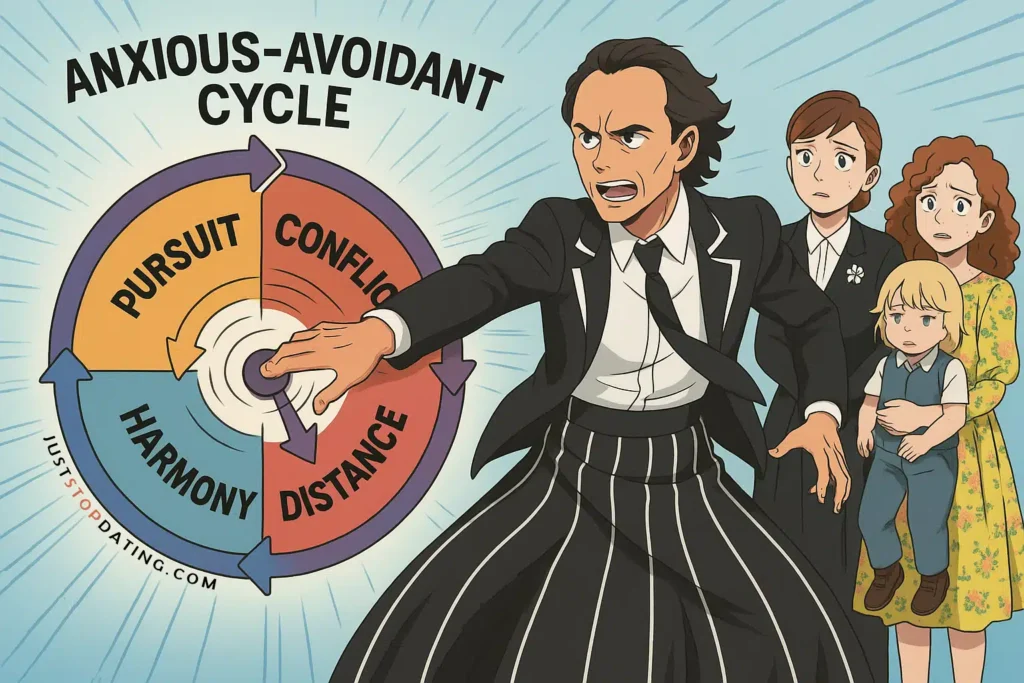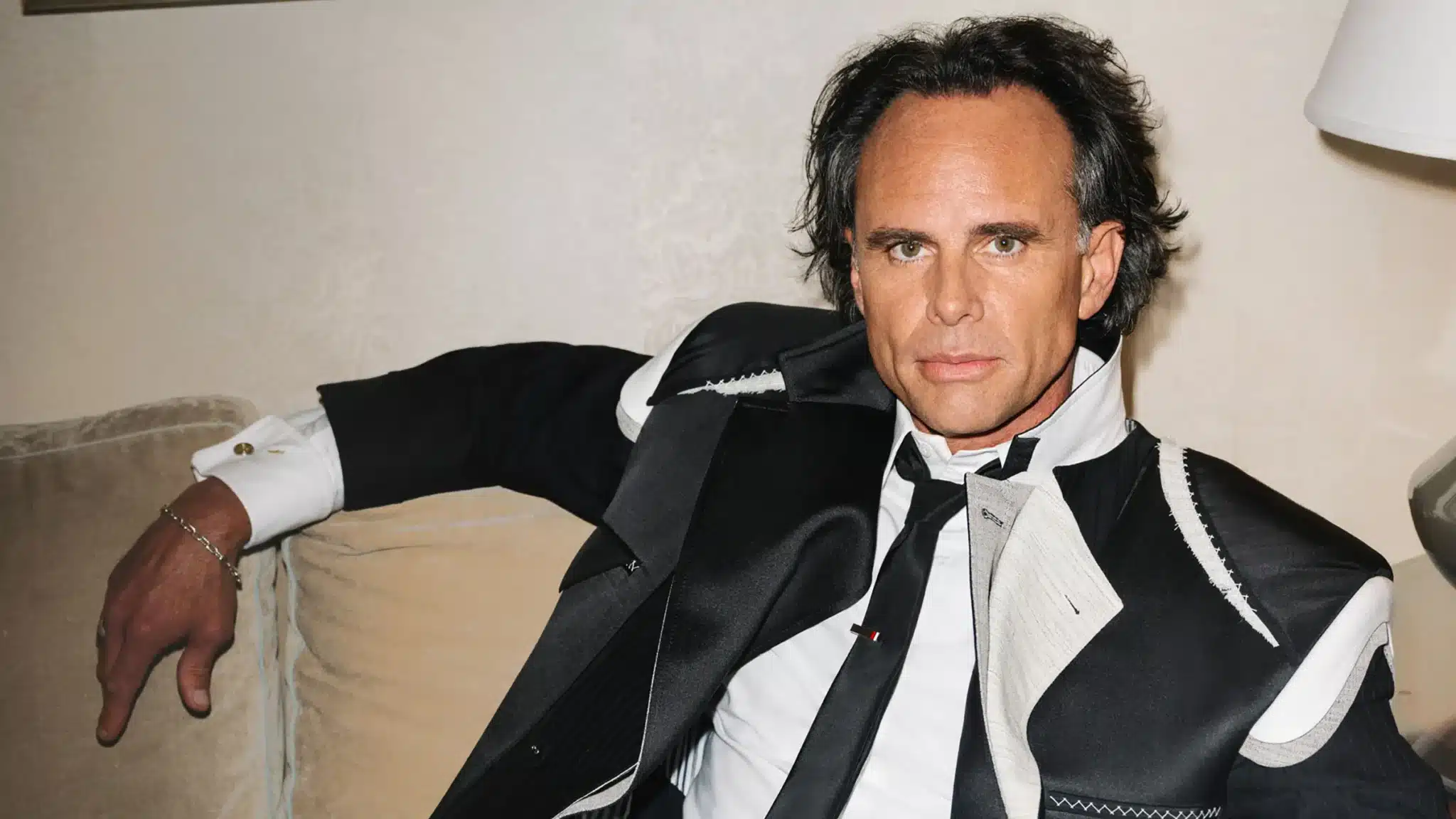Walton Goggins, without fail, will always play the avoidant partner. The one who makes a joke to deflect, the dad who takes you to the pet shop and tells you to pick out any animal you want. While you’re deciding between a lizard and parakeet, he’s gone! Years later, like every classic avoidant they will charm their way back into your heart with a little song and dance. If that feels familiar, I’m genuinely sorry.
You know all too well about how possible it is to confuse chaos with love. Prior to this year, I had no idea who this man was. Never heard of Walton Goggins but he sure as hell looks and acts exactly like someone with that name. I used to skip right over The Righteous Gemstones and Vice Principals to find House of the Dragon or Midsommar.
Recently, I found myself looking into who he was after I saw a clip from Season 3 of The White Lotus. I found myself laughing so hard at how ridiculously avoidant his character was. Then it dawned on me, I have been both the avoidant and the anxious one in relationships. And it sucks. It’s the worst kind of paradox when it comes to attachment styles.
Looking into Walton Goggins filmography, I made it my latest hyperfixation to read the synopsis of this roles and I loved how similar each and every one of the characters were but that could also be a serious issue with typecasting. Anyway…the latest (potentially manufactured) drama with his co-star, Aimee Lou Wood really makes you wonder, is Walton Goggins just an emotionally avoidant guy who is cold as ice but funny as hell?
Walton Goggins Plays with the Avoidant-Anxious Cycle Trope
From Baby Billy in The Righteous Gemstones to the toxic boyfriend in The White Lotus, Walton Goggins excels at portraying characters who offer emotional highs and lows but no real stability. They seduce with charm, vanish when closeness becomes real, then reappear just as you begin to heal. Without a doubt, it seems so passionate. Maybe even a little bit addictive. But is that healthy love? This cycle of on/off triggered by external and internal pressures establishes an “intermittent reinforcement loop.”
Intermittent reinforcement happens when positive experiences such as sweet compliments, affection, attention, or emotional availability are given inconsistently. In other words, you don’t receive these “rewards” every time you show up with care or vulnerability. Instead, you get them unpredictably, and often after distress or uncertainty in the relationship.
Neuroscientists have found that this kind of inconsistency in relationships affects the brain’s reward system pathways. When the affection or connection finally shows up, the brain releases a spike of dopamine, the neurotransmitter linked to desire, reward learning, and addiction. That rush of dopamine is stronger than if the affection had been predictable. Over time, this teaches your nervous system to crave love and the emotional high that follows confusion or rejection (Bosmans et al., 2022).
When we become more aware of this confusing cycle, you’ll learn that there is a biological basis for the behavior. It’s what keeps us drawn to the different types of avoidant characters portrayed by Walton Goggins in some of the most dark and hilarious ways.
Does Your Partner Have an Avoidant Attachment Style?

Recognizing avoidant tendencies in your partner can bring clarity to confusing relationship dynamics. Our goal here is for you to identify the behavior, practice compassion for yourself and others, and communicate without pressure. Using Walton Goggins as an example is our easy way to show how a charismatic actor portrays roles of the avoidant partner reminiscent of partners we may have encountered in our own lives.
Step 1: Identify Key Avoidant Behaviors
Start by observing patterns rather than isolated incidents. A dismissive-avoidant person might withdraw when conversations get too deep, downplay their emotions, or seem indifferent. They may even doubt the entire relationship when things feel serious, not because they don’t care, but because commitment triggers their fear of losing independence (think Walton Goggins as Uncle Baby Billy walking out on little Herman).
Step 2: Practice Compassion (For Yourself & Them)
If you’re more anxious-leaning, their avoidance can feel like personal rejection, leaving you questioning your worth. But like Ava (Joelle Carter) in Justified, who kept mistaking Boyd Crowder’s (again, with Walton Goggins?😂) emotional retreats for indifference, when really, he was terrified of needing her. It’s crucial to remind yourself that your partner’s emotional distance is about their own unresolved struggles, not your value.
Many avoidant individuals have deep, unprocessed pain (Torrico & Spara, 2024). This could be childhood neglect or past betrayals in which love was conditional or absent. To them, trusting people is a challenge to their ability to be vulnerable. Emotional withdrawal isn’t about you. I speak from experience as an avoidant-leaning person. When I withdraw emotionally, I’m scared and want to suppress that fear. It comes from feeling unable to talk to myself and my parents about what concerned me. Avoidants cope by turning themselves into an echo chamber. It’s a protective mechanism.
When you practice compassion, it doesn’t mean excusing hurtful behavior. What you’re doing in this moment is understanding your feelings and learning how to see others.
Step 3: Communicate Observations Without Pressure
When addressing avoidant behavior, your approach matters. Avoidants often retreat under pressure, so use neutral, non-confrontational language. Instead of “You always pull away,” try “I’ve noticed that when we talk about our relationship, you seem uncomfortable. Can you help me understand what that’s like for you?” This invites dialogue without triggering defensiveness. Focus on specific actions rather than labeling.
Timing of your delivery is also key. Choose a calm moment, not mid-argument. Take a cue from when Walton Goggins played Venus Van Dam in Sons of Anarchy, who is (Surprise, Surprise) avoidant-ish when she only reveals her heart after deflecting with a joke. Reassure the avoidant partner that you’re not trying to control them.
When your partner asks for space, give it to them. Later, when things have cooled down, you might say, “I respect your need for space, and I also want to feel close to you. How can we balance both?” Be prepared for a slow process; avoidant individuals often need time to process emotions.
If a partner is unwilling to engage, reflect on whether this dynamic meets your needs long-term. Healthy communication requires effort from both sides, and you deserve a partner who’s willing to work toward connection.
What To Do Next
Many of us dealing with insecure attachment styles were trained by past relationships to associate chaos with closeness. The solution isn’t just more information. It’s nervous system clarity, emotional boundaries, and support.
Download the Free Dating Detox Guide to get practical tools for breaking emotional patterns like this. We cover five common traps in relationships and show you how to identify and shift your reactions.
Ready to stop dating emotionally avoidant chaos? Subscribe to Just Stop Dating for weekly breakdowns, guided tools, and no-nonsense clarity.











